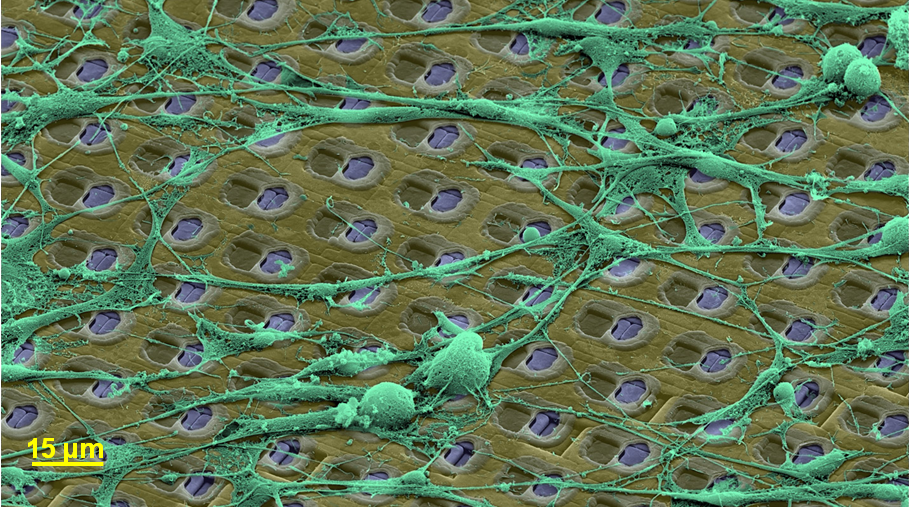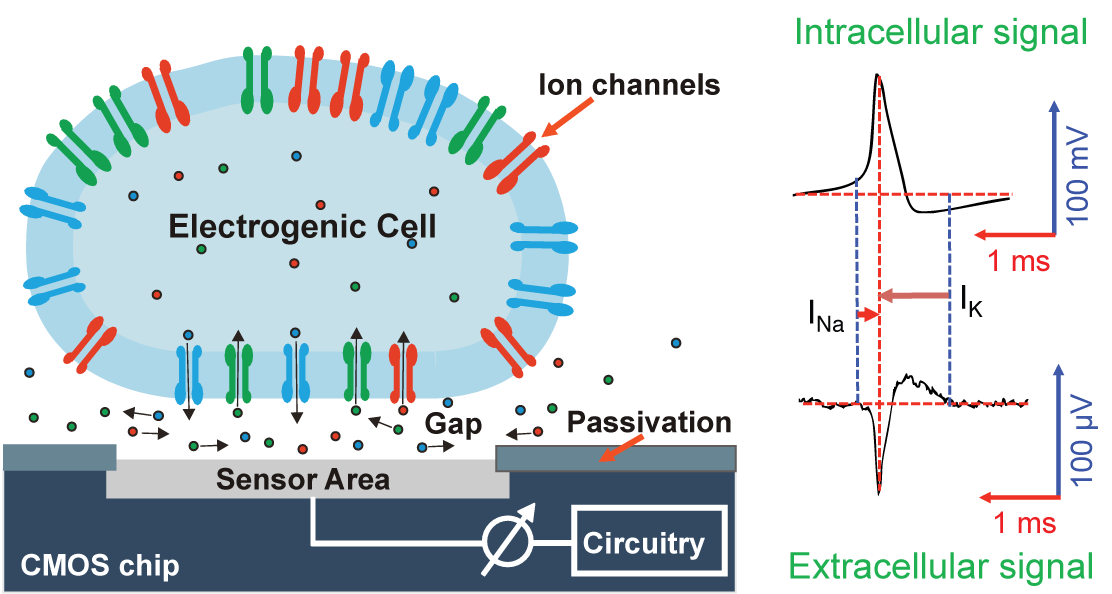Electrophysiology & Neuroscience
external pageElectrophysiologycall_made is the study of the electrical properties of biological cells and tissues. It involves measurements of voltage changes or electric currents on a wide variety of scales from single ion channels to whole organs like the heart. In neuroscience, it includes measurements of the electrical activity of neurons and, particularly, action potential activity.
external pageNeurosciencecall_made is the scientific study of molecular, cellular, developmental, structural, functional, evolutionary, computational, and medical aspects of the nervous system. It is an interdisciplinary science that includes aspects of biology, chemistry, computer science, engineering, mathematics and medicine.
We pursue an extracellular, bioelectronic approach to electrophysiology, which relies on the close juxtaposition of electrogenic cells (cells that produce electrical activity) and tissues with state-of-the-art integrated electronic systems.
The cell preparations (dissociated cells, tissue slices) are placed directly atop fully processed microelectronics chips carrying thousands of electrodes and featuring CMOS circuitry. The bio-electronic interface consists of noble-metal electrodes.
Prospective fields of applications of our technology include, besides fundamental neuroscience research, pharmascreening, the investigation of mechanisms of neurodegenerative diseases, or the development of aural and visual prostheses.
Neurons & Axons
Neurons are important electrogenic cells in the brain. By applying high-density-microelectrode-array technology to dissociated cell cultures, we try to investigate details of neuronal information processing. The high spatio-temporal resolution of the obtained data also permits characterization of the electrical activity of subcellular components, such as dendrites or axons.
More information
Retinal Investigations
The retina is an almost 2-dimensional neuronal system, for which high-density microelectrode arrays are ideally suited to record from the retinal ganglion layer. By applying light stimuli, we try to find defined retinal ganglion cell types, to characterize their behavior and to decipher features of retinal coding of visual inputs.
More information
Brain Diseases
We apply the high-resolution microelectrode technology to study effects of brain diseases on neuronal functioning, also in collaboration with industrial partners. We have the techniques to record from acute and organotypic slices, as well as to apply different genetic tools to tissue slices during incubation.
More information
Neuronal Signal Analysis & Modeling
The multitude of tightly spaced electrodes produces large data sets, where every neuron is recorded from by many electrodes, and where every electrode records signals from many neurons. This poses challenges to spike sorting and signal processing. We develop tools and methods to extract meaningful information from the large datasets and use the information for detailed modeling of neuronal behavior.
More information


